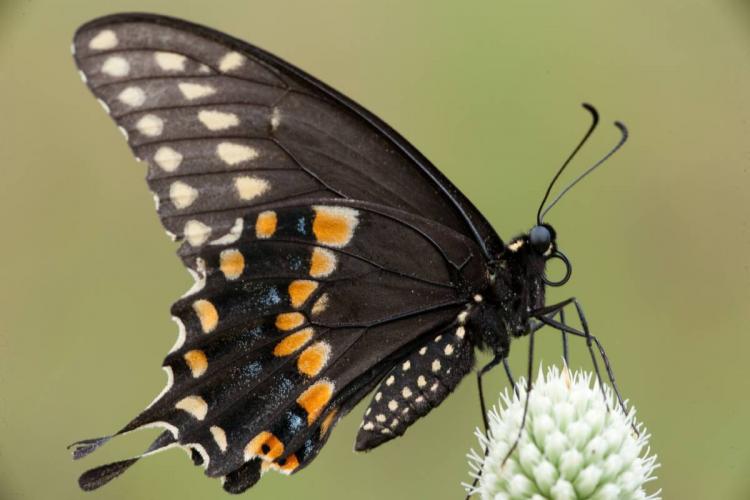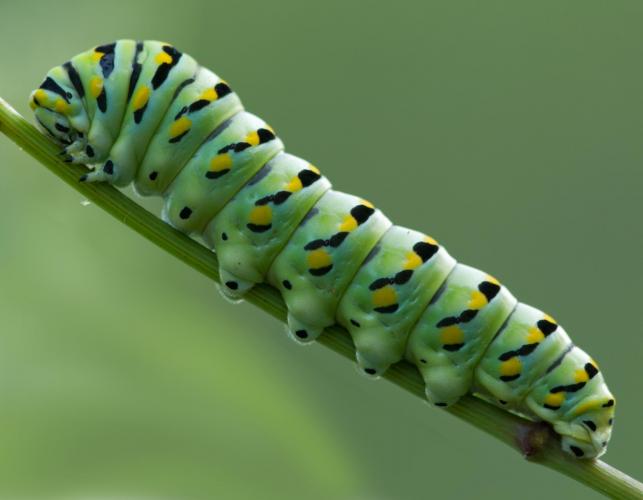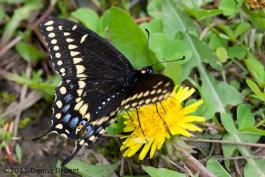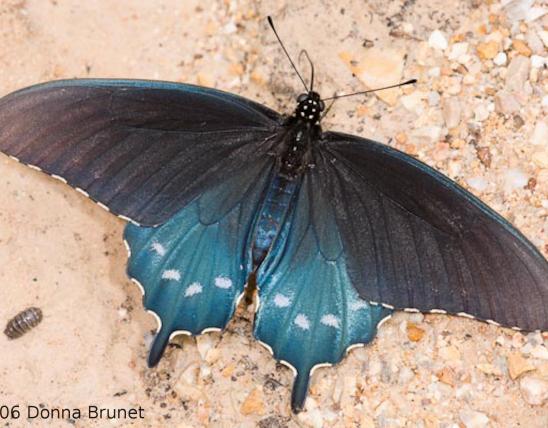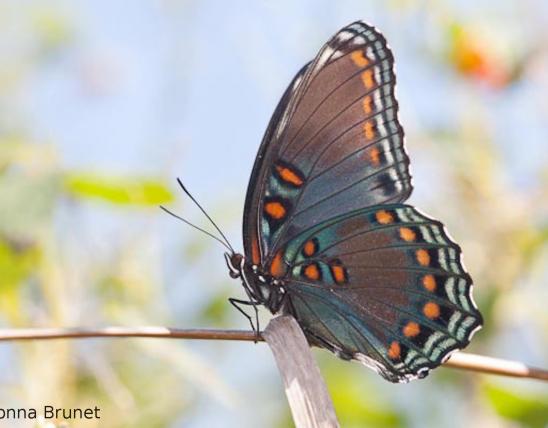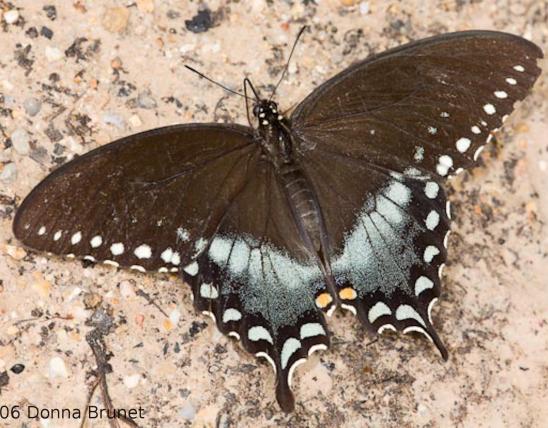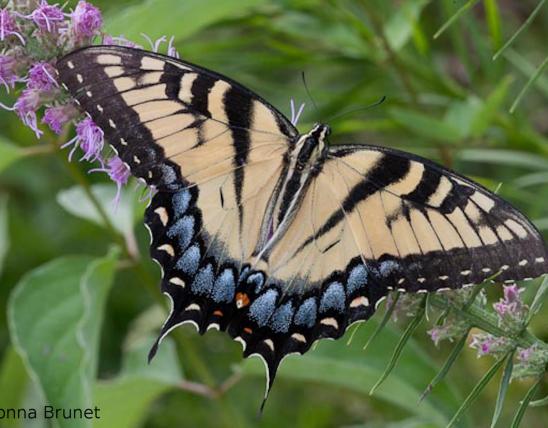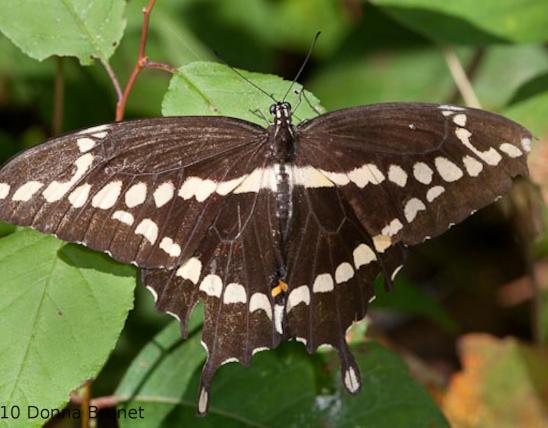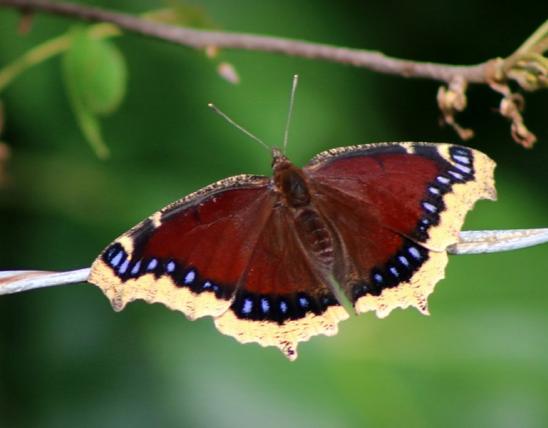
From below, black swallowtails can be separated from pipevine and dark female eastern tiger swallowtails by the two rows of red-orange spots. They are separated from spicebush swallowtails by the complete row of spots in the middle area: There are no “missing” spots, and there is a small spot just to the basal (inner) side of the median row.
Seen from above, both sexes have two rows of yellow spots; these spot bands are generally wider on males. A small yellow spot is present toward the tip of the forewing; spicebush swallowtails lack this spot. As mimics of the distasteful pipevine swallowtail, females have blue scales on the top of the hindwing.
Larvae change greatly as they develop. Mature larvae are green with orange-spotted black bands. When disturbed, they rear back, and a stinky, orange, forked gland (called an osmeterium) pops out to deter predators. The gland looks like horns or a forked tongue on the back of the caterpillar’s head. Younger larvae are mostly black with orange spots and usually have a whitish band or saddle across the middle; they often have tiny spikes.
Wingspan: 2¾–4 inches.

Statewide.
Habitat and Conservation
Mainly found in open habitats, including grasslands and old fields, along roadsides, and in gardens, backyards, and parks. The flight is fast and dashing, a few feet above the ground. Although the caterpillars of this common butterfly often eat plants of importance to humans, the eggs are laid singly. These caterpillars rarely cause serious damage.
Food
Larvae feed on virtually any plant in the carrot family, including cultivated dill, fennel, carrots, parsley, and celery, plus wild-growing Queen Anne’s lace and poison hemlock. The adults visit a great variety of flowers for nectar and are often found taking moisture from wet ground.
Status
Common breeding resident.
Life Cycle
Adults fly from April through late fall. As with most other butterflies, females lay eggs on suitable food plants and the larvae hatch, eat, grow, and molt. Mature larvae seek sturdy upright structures upon which to form the chrysalis. The chrysalis can be tan or greenish and is usually adhered to the surface at the “foot,” and secured midway with a slinglike strand of silk. This species overwinters in the chrysalis stage. Many people have seen this butterfly’s life cycle in elementary school.
Human Connections
The larvae eat several common garden plants, including parsley, fennel, dill, and carrots. If the plants are few and small, the caterpillars can damage the harvest — but most of us don’t mind trading some parsley for a crop of swallowtails and the chance to see the miracle of metamorphosis!
Ecosystem Connections
The caterpillars are herbivores that graze on vegetation. The adults serve a role in pollination. Because it resembles the toxic pipevine swallowtail, this species gains protection from predators. When it is raised on deadly toxic water hemlock, this species likely becomes toxic itself.

